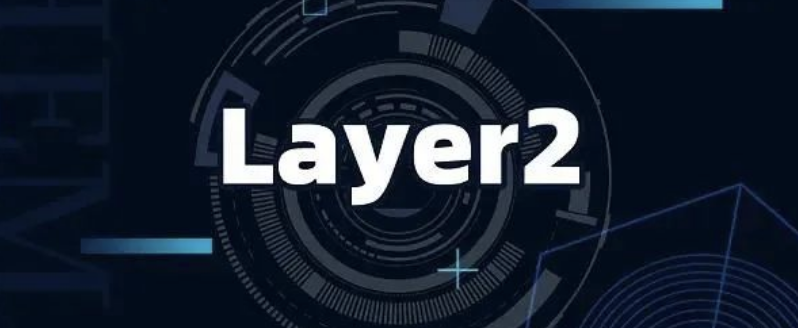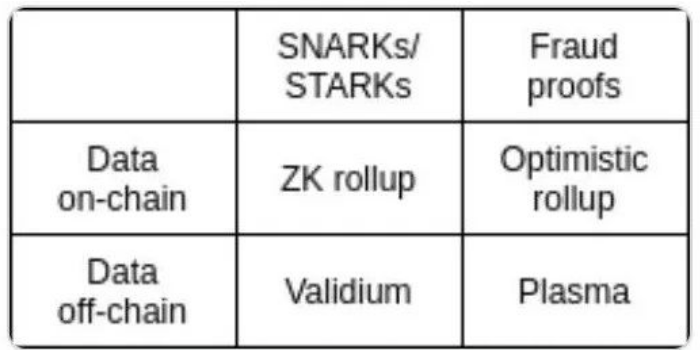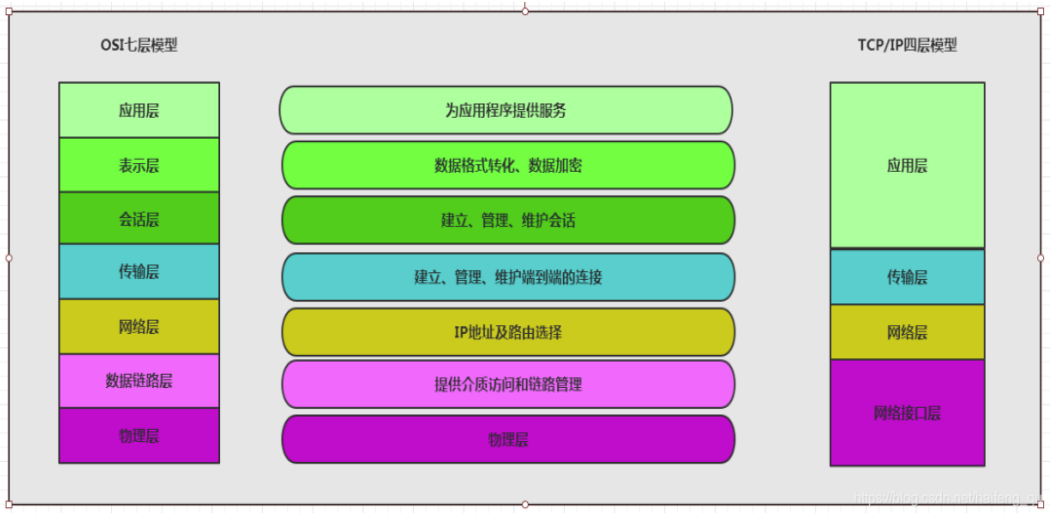Original link: https://www.hellobtc.com/kp/du/08/3997.html
Author: Dabai / Source: Vernacular Blockchain

Author | Vernacular Blockchain
Produced | Vernacular Blockchain (ID: helloBTC)
According to the news on August 25, Ethereum official stated that the upgrade of Ethereum’s proof-of-stake mechanism will be carried out at around 19:34:47 Beijing time on September 6, 2022. After many years, the Ethereum merger is finally here! It is foreseeable that the arrival of the Ethereum merger will lead to the prosperity of Layer 2 solutions.
So why is it necessary to promote the development of Layer 2 after the merger?
Layer 2 is an umbrella term for solutions designed to scale Bitcoin, Ethereum or any other “core” blockchain by improving TPS performance and reducing gas fees. These solutions are called “Layer 2” because they sit on top of (and depend on) a Layer 1 network.
The Ethereum network is particularly concerned with this. In an article published in October 2020, Buterin pointed out that many non-DeFi DApps have been excluded from the network due to rising gas fees. Because when the network gets congested, users scramble to process their transactions faster. The resulting bidding wars for space in each block often drive gas prices higher , sometimes exceeding $130 in fees, making it unaffordable for most decentralized applications (DApps).
Although Ethereum is currently the most commonly used and probably the most secure blockchain, the above shortcomings have to be faced, and various solutions have been mentioned before. Today, let’s summarize the essence of Ethereum and Layer 2 in the vernacular blockchain in the past, and let’s review the past and learn new things in combination with the latest reports 🙂
01
Why Ethereum is upgrading from 1.0 to 2.0
Ethereum 2.0 is a major upgrade to the current Ethereum 1.0 mainnet, aiming to accelerate the use and application of Ethereum by improving its performance including scalability, security and sustainability.
Ethereum 2.0 will be released mainly in four “Phases”, and each phase will improve Ethereum’s functionality and performance in different ways.
Unlike 1.0, these upgrades are dominated by multiple different teams within the Ethereum ecosystem, each focused on building a specific part of the overall upgrade, as if it were a company product release.
Phase 0 : This is the first phase of Ethereum 2.0, focusing on the launch of the beacon chain
Phase 1 : This phase focuses on sharding or data sharding as we describe later.
Stage 1.5 : The focus of this stage is to connect 64 shard chains to the beacon chain, making the current ether chain one of the shards, with a total of 65 chains.
Stage 2 : At this stage, Ethereum began to integrate and improve the system, and gradually completed 2.0.
More details : Explain in one article | Ethereum is already the king, why bother to continue to upgrade to 2.0?
02
What are the development directions for Layer 2 expansion?
Layer 2, as the most important expansion method before the completion of Ethereum 2.0, ushered in the year of landing in 2020. At the same time, we also ushered in an era of bayonet fighting. The major channels, side chains, and the Rollup family are gearing up to fight, hoho!
With the emergence of these basic technologies, many representative projects have also been born! More details: The biggest problem with blockchain is the lack of users. Can this kind of new progress support at least 10 million new users?
By 2021, it has been 4 years since the word “expansion” entered the public eye. With the mainnet launch of Arbitrum, we have turned to the penultimate chapter of the book “Scaling”.
The development of channel technology has been clearly positioned as an “auxiliary position” for a capacity expansion plan , which cannot stand in the front row, not to mention the C position.
The development of DPoS, EOS, Tron, and BSC has brought a lot of new ideas to the blockchain, but it tends to be centralized in general, and there are not many that can be played.
The large block is a more “intuitive” expansion method than DPoS. But there is also the problem that large blocks require high-performance nodes, and high-performance nodes conflict with the development of decentralization, so whether the expansion method of large blocks is feasible or falsified still needs market testing.
Then there is the sidechain. The purpose of the sidechain is to achieve two-way anchoring, so that a certain encrypted token can be “transferred” between the main chain and the side chain. More details: The development bottleneck of Bitcoin and Ethereum is about to disappear. Looking at the expansion plans in the past four directions, which ones are you optimistic about?
Later, popular “new expansion methods” such as Rollup, sharding, layering, work history proof and DAG were developed. If you can distinguish the difference between sidechain and Layer2, it can be regarded as a basic understanding of expansion, then whether you can distinguish the difference between Plasma, Rollup and Validium can be regarded as an advanced test question for expansion. The following picture can help you understand better:

More details: Which of the 7 popular expansion plans will promote the next journey of Bitcoin and Ethereum?
03
How is the development of Layer2 expansion?
With the development of major expansion routes, EIP1559, Rollup, sharding and other competitions are in full swing. Buterin made a detailed interpretation of this: Buterin explained it all at once, the latest progress and challenges of Ethereum: EIP1559, Rollup, sharding , Competitive public chain
With the development of history, V God set the tune of Rollup as the main expansion method of ETH. Arbitrum, which is launched on the main network, is strictly speaking, the first “universal Rollup Layer 2 expansion plan” to be launched on the main network in history. .
Four differences are introduced here, namely the difference between Rollup and side chain; the difference between OP and ZK; the difference between Optimism and Arbitrum in OP; the difference between Zk-Rollup and Validum in ZK. More details: Arbitrum, the Layer 2 star project that V God likes, is launched. Will the Rollup expansion plan usher in new progress?
04
Who will come out on top in Layer 2 expansion?
Rollups has come a long way since its inception in 2019. We have seen the formation of various other promising theoretical designs of Rollup involving many hybrid evolutions. There are two main points here:
1. Whether you are a friend of Ethereum or a killer, join the Rollup camp, let’s roll together!
2. From the long-term perspective of the centralization of Ethereum Rollup block production, Rollup may be an inevitable trend.
More details: Vernacular Interpretation of Buterin’s Latest Post: The Final Battle of Ethereum’s Expansion
When we first mentioned the expansion of ETH a few years ago, the first thing that came to mind was Layer 2, and in Layer 2, the first thing that came to mind was Lightning Network, State Channel, Plasma…
After tossing for a few years, I found that it was of no use. Many project parties and capital could not wait. Fortunately, Layer 2 finally found its direction. Rollup was born, and V God directly set the tone and divided Let’s not do anything about the movie! ETH takes the Rollup plan first!
Later, it was found that only one Rollup solution is not enough, and it is also divided into OP series and ZK series. The saying “medium and short-term OP, long-term ZK” is popular in the industry.
Later, Arbitrum was born, followed by Hermez, Aztec, OMG to do Boba, Metis forked Optimism, and Polygon to acquire a package solution for Layer 2.
There are too many Layer2s, and the projects are running out…
Aside from the dedicated Layer2 such as Lrc, and the privacy-oriented Layer2 such as Aztec, we analyze how many ways there are currently for the universal Layer2 alone.
More details: The Layer 2 track is about to explode. Who will be the front runner?
In the blink of an eye, 2022 is coming. This year, we have a very clear and clear path for blockchain expansion, that is, modular thinking.
To put it simply, it is to split the original layer into two or even three layers for you. After all, on the first layer, the impossible triangle is like a confinement spell, restricting every public chain that wants to expand.
Of course, the concepts of L1 and L2 are not unfamiliar to many people, but the modular public chain, like the TCP/IP protocol of the traditional Internet, has more detailed layers.
 In the current mainstream consensus, the modular public chain should have the following three layers:
In the current mainstream consensus, the modular public chain should have the following three layers:
1.Execution Layer – Execution Layer
2.Settlement Layer – settlement layer
3. Data Availability Layer – Data Availability Layer
Transactions are executed through high-speed Rollup, the secure settlement layer is responsible for settlement, and the low-cost and large-capacity data availability layer is responsible for guaranteeing. We have reason to believe that the infrastructure blueprint for the Web3.0 era has been slowly unfolding in front of us. More details: The new trend of public chain in 2022, you have to know the “new route of expansion”
05
summary
The development of the Layer 2 layer has gone through many years, from the initial spark to the mid-term blooming of a hundred flowers, a hundred schools of thought contend, and now it is clear that the modular development route should be combined with Rollup . Time is silent, but it gives us the answer.
However, because the merger is imminent and everything has not yet been formed, whether this route will develop smoothly to the end still needs the test of time. Because it is dominated by FOMO emotions, it is better to study hard, keep up with the trend, and be consistent with changes.
Do you have anything to say about future development? Welcome to the comment area to exchange and discuss.
This article is reprinted from: https://www.hellobtc.com/kp/du/08/3997.html
This site is for inclusion only, and the copyright belongs to the original author.